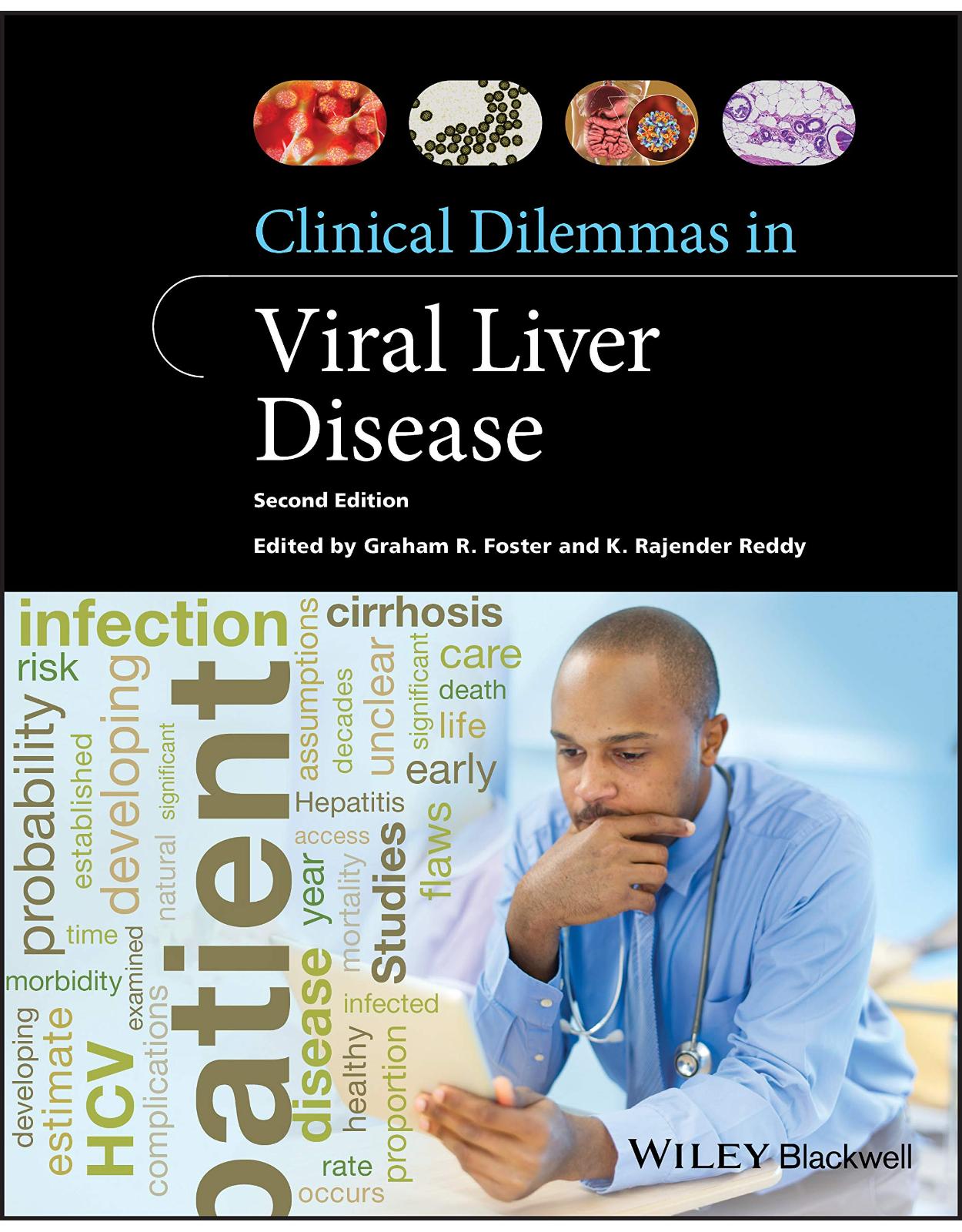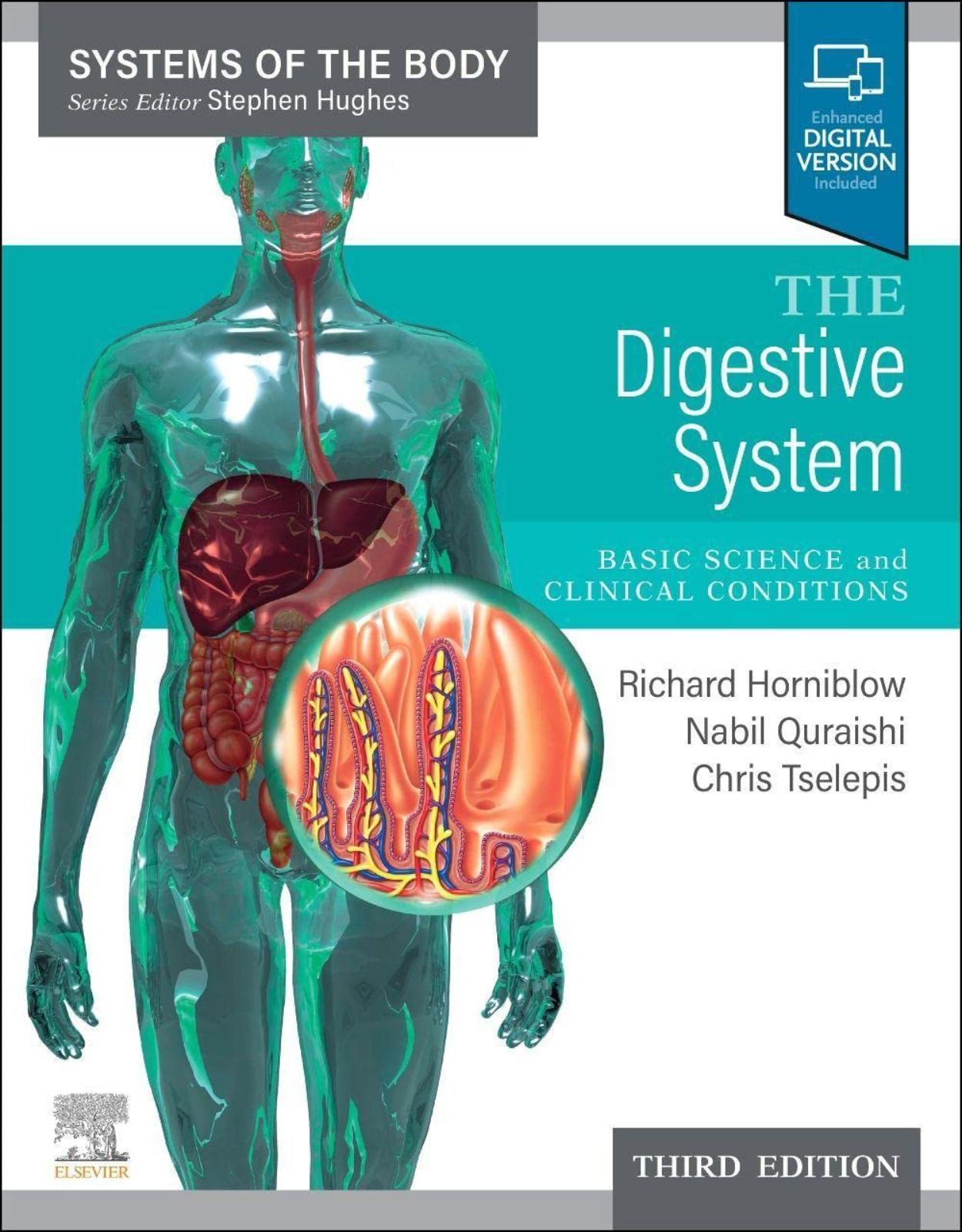
Clinical Dilemmas in Viral Liver Disease
Livrare gratis la comenzi peste 500 RON. Pentru celelalte comenzi livrarea este 20 RON.
Disponibilitate: La comanda in aproximativ 4 saptamani
Editura: Wiley-Blackwell
Limba: Engleza
Nr. pagini: 272
Coperta: Paperback
Dimensiuni: 18.54 x 1.78 x 23.37 cm
An aparitie: 22 April 2020
Description:
The only evidence-based book to approach viral liver disease by focusing exclusively on the clinical dilemmas encountered by hepatologists and their medical teams
Although viral hepatitis is a growing public health risk around the world, the World Health Organization (WHO) views the elimination of hepatitis infection over the next several as an achievable goal. Effective pharmaceutical therapies are now available, yet medical teams caring for patients with viral hepatitis are challenged when looking for answers to specific questions in the current medical literature. The second edition of Clinical Dilemmas in Viral Liver Disease provides evidence-based guidance for medical teams involved in diagnosing, treating, and managing patients with viral liver disease.
This fully updated book explores developments in new treatments and new diagnostic approaches that are contributing to WHO goals of viral elimination. Brief, easily referenced chapters examine clearly defined topics, addressing the clinical questions and difficulties encountered by medical teams in day-to-day practice. Contributions by an international team of investigators and clinicians address clinical questions and issues which are seldom found in standard textbooks and online repositories. Offering practical guidance on the specific challenges and dilemmas of treating viral liver disease, this unique volume:
Provides practical, evidence-based guidance on topical and controversial issues
Addresses understudied questions that arise in day-to-day clinical practice
Discusses the challenges surrounding global elimination programs
Presents focused approach that is supported by current literature and expert opinion
The second edition of Clinical Dilemmas in Viral Liver Disease is required reading for practicing and trainee hepatologists, gastroenterologists, transplant surgeons, virologists, and other practitioners involved in caring for patients with liver disease.
Table of Contents:
PART I: Investigating the Liver
1 Noninvasive markers of fibrosis: how reliable are they?
Introduction
Currently available noninvasive methods
Diagnostic performance of noninvasive methods for diagnosing cirrhosis
Use in clinical practice
Conclusions and perspectives
References
2 Liver biopsy in chronic viral hepatitis: is there still life left in it?
Liver biopsy
Serologic markers
Imaging alternatives to liver biopsy
Guidelines
What is the trend?
Is biopsy needed for the complications of chronic viral hepatitis?
Is there still life in it?
References
3 Screening for hepatocellular carcinoma in viral liver disease: any new biomarkers on the horizon?
Introduction
References
4 Realistic estimates of hepatitis C virus and hepatitis B virus disease burden
Introduction
References
PART II: Today's Therapies
Section 1: HCV
5 Acute hepatitis C: treat immediately or give a chance to spontaneously clear?
Introduction
Defining acute hepatitis C infection
Risk factors for evolution of chronic infection
Acute hepatitis C increasing due to opioid epidemic
Treatment response rates in acute relative to chronic hepatitis C
Arguments to treat or not to treat in acute hepatitis C (Table 5.1)
Postexposure prophylaxis (PEP)
Practical approach to decision making in acute hepatitis C
References
6 Is ribavirin alive or dead in the current era of HCV therapy?
Introduction
Ribavirin in the interferon era
Ribavirin in the era of all‐oral DAAs
Conclusion
References
7 Hepatitis C virus genotype and viral testing, and on‐treatment monitoring: necessary or overkill?
Introduction
Current recommendations on diagnosis and treatment monitoring for HCV infection
Proposed framework for simplified HCV infection management (Figure 7.1)
Conclusion
References
8 Treatment of hepatitis C virus in renal disease: can we use all the drugs without additional monitoring?
Introduction
DAA metabolism and general recommendations
Non‐sofosbuvir recent results
Sofosbuvir‐based regimen and renal safety
Conclusion
References
9 Does directly acting antiviral therapy improve quality of life?
Introduction
Health‐related quality of life in chronic hepatitis C infection
Direct‐acting antiviral therapy and health‐related quality of life
Conclusion
References
10 Morbid obesity and hepatitis C: treat as normal or are there additional issues to consider?
Obesity as a health problem
Obesity‐related comorbidities
Assessment of fibrosis in obese patients
Obesity and sustained virologic response with interferon therapies
Obesity and SVR in the new direct‐acting antivirals
Obesity as a predictor of fibrosis progression beyond SVR
Conclusion
References
11 Generic direct‐acting antiviral agents: do they work well?
Introduction
Access to generic DAAs
Bioequivalent pharmacokinetics for generic and originator DAAs
Results of generic DAAs by country
Buyers’ club global access programs
Results of generic DAA by genotype, cirrhosis and treatment regimen – comparison with clinical trial data
Conclusion
References
12 Impact and management of patients with multiple hepatitis C virus genotypes
Introduction
Extent of the problem
Chimeric hepatitis C virus
Clinical implications of infection with multiple genotypes
Conclusion
References
13 Hepatitis C virus and injecting drug use: what are the challenges?
Introduction
Challenge 1: Identification of those with cirrhosis
Challenge 2: Halting the spread of HCV
Challenge 3: Providing treatment as prevention
Challenge 4: Poor linkage to care
Challenge 5: Reinfection
Challenge 6: Standard models of care are not suited for PWID
Conclusion
References
14 Hepatitis B virus reactivation while on hepatitis C virus direct‐acting antiviral therapy: is that a real concern and when is it a concern?
Introduction
Prevalence of HCV/HBV coinfection
Definition of HBV infection
Definitions of HBV reactivation and clinically significant adverse events
HBV reactivation among persons with chronic HBV
HBV reactivation among persons with resolved HBV
Recommendations for clinical practice
Conclusion
References
15 Drug–drug interactions with direct‐acting antivirals: when do we need to care?
Introduction
Mechanisms of Drug–Drug Interactions
Pharmacology of individual directly acting antivirals
Drug–drug interaction advice for specific therapeutic areas
Conclusion
References
16 Treatment of hepatitis C in children
Introduction
Principles of treatment
General management
Conclusion
References
17 While direct‐acting antivirals are effective, are there any unique safety considerations?
Introduction
Safety profile of DAAs
Significant drug–drug interactions
Conclusion
References
18 Harm reduction strategies to prevent new infections and reinfections among people who inject drugs: how effective are they?
Introduction
Risk factors for HCV acquisition among people who inject drugs
Definitions of viral relapse and reinfection
Strategies to reduce HCV (re)infection among PWID
Treatment as prevention and the impact of reinfection
Practical approaches to prevent HCV infection and reinfection among PWID
References
19 Hepatitis C virus therapy in advanced liver disease: treat or transplant and treat?
Introduction
Efficacy and safety of treatment before liver transplantation
Efficacy and safety of treatment after liver transplantation
Controversies in the timing of HCV treatment of patients with decompensated cirrhosis
Conclusion
References
20 Hepatocellular carcinoma and hepatitis C virus: which should be treated first?
Introduction
Treatment of HCV before tumor eradication
Treatment of HCV after tumor eradication
Conclusion
References
21 Should we incentivize patients to take hepatitis C virus therapy?
Introduction
Conclusion
References
22 Treating prisoners with hepatitis C: should we do it and how?
Introduction
Response
Challenges and solutions
Conclusion
Acknowledgments
References
23 Use of hepatitis C virus‐positive organs for uninfected recipients in the era of effective and safe direct‐acting antivirals: pros and cons
Introduction
Definitions
Use of organs from HCV‐positive donors in HCV‐negative recipients
Treatment and ethical concerns
Current and future perspectives
References
24 Is real‐life hepatitis C virus therapy as effective as in clinical trials?
References
Section 2: HBV, HDV, and HEV
25 Management of acute hepatitis B infection: when should we offer antiviral therapy?
Introduction
Rationale for treatment of acute HBV infection
Viral kinetics of acute HBV infection
Antiviral options for acute HBV infection
Antiviral therapy to improve liver function in acute HBV
Antiviral therapy to prevent chronic infection in acute HBV
Discussion
Conclusion
References
26 Rethinking the inactive carrier state: management of patients with low‐replicative HBeAg‐negative chronic hepatitis B and normal liver enzymes
Introduction
Definition of normal ALT levels
Hepatitis B virus DNA levels
Serum HBsAg levels
Hepatitis B core‐related antigen
Fibrosis evaluation and noninvasive markers
Natural history
Therapy
References
27 Hepatitis B e antigen‐positive chronic hepatitis B infection with minimal changes on liver biopsy: what to do next
Conclusion
References
28 The management of hepatitis B virus in pregnancy
Prevention of hepatitis B virus transmission by vaccination
Antiviral prophylaxis for high viral load mothers
Hepatitis flare after stopping antiviral therapy
Safety of antiviral drugs during pregnancy and breastfeeding
References
29 Treatment of hepatitis B in children
References
30 Hepatitis B vaccine failures: how do we handle them?
Introduction
History
Definition of nonresponse to immunization
Risk factors for nonresponse to vaccination
Ways to approach nonresponse to conventional immunization against HBV
Vaccine adjuvants and immune stimulators
References
31 The stopping rules in hepatitis B virus therapy: can we provide any guidance?
The dilemma: effective control but little cure in chronic hepatitis B
How may discontinuation of antiviral treatment increase immune control?
Stopping NA treatment after achieving serologic endpoints
Inducing serologic response by stopping NA treatment in HBeAg‐negative patients
How can response to NA discontinuation be predicted?
Management of harmful ALT flares after NA discontinuation
Guidance for stopping NA treatment
Future perspectives on the role of NA discontinuation for HBV treatment
References
32 Hepatitis C and hepatitis B coinfection
Introduction
Clinical impact of HCV/HBV coinfection
Evaluation and treatment of HCV and HBV coinfection (Table 32.1)
Treatment of subjects with HCV/HBV coinfection using PEG‐IFN and RBV
Treatment of HBV and HCV coinfection in the era of DAA
Improvement in clinical outcomes
Updated international guidance on the treatment of patients with HCV and HBV coinfection
Conclusion and Future Directions
Acknowledgments
References
33 Chronic hepatitis E virus infection: is it reality or hype and where does it matter?
Introduction
Chronic HEV infection among solid organ transplant patients
Chronic HEV infection among HIV‐positive patients
Management of chronic HEV infection
Conclusion
References
34 Hepatitis E virus vaccines: have they arrived – when, where and for whom?
Introduction
Principles underlying HEV vaccines
Human studies with HEV vaccines: efficacy and safety
Indications for use of HEV vaccine
Conclusion
References
PART III: Clinical Set‐up and the Future
35 Do we need expert hepatitis C virus treaters or are amateur treaters good enough?
References
36 Hepatitis C vaccines: how close are we to the promised land?
The need for an HCV vaccine
HCV vaccine rationale: insights from natural infection and animal studies
Generating anti‐HCV immunity with vaccines
Universal HCV vaccines to target multiple genotypes
Combining antibody and T‐cell components in rational vaccine design
Remaining challenges to overcome in HCV vaccine development
Acknowledgments
References
37 Elimination of hepatitis C virus in high‐prevalence, low‐income countries: is it feasible?
The hope
The barriers
Pursuit of a model of care: the Egyptian experience
Conclusion
References
38 Hepatitis B virus diagnostics: anything new?
Introduction
Hepatitis B surface antigen
Quantitative HBV DNA testing
Covalently closed circular DNA
Hepatitis B e antigen and antibody
Hepatitis B core antigen and core‐related antigen
Quantitative HBV RNA
Hepatitis B core antibody
Hepatitis B surface antibody
HBV genotypes and subtypes
Precore and basal core mutations
Biomarkers associated with risk for progression
Future perspectives
Conclusion
References
PART IV: Ongoing Controversies
39 Is hepatocellular carcinoma risk impacted favorably or unfavorably by hepatitis C virus therapy with direct‐acting antivirals?
References
40 Global elimination of hepatitis C virus by 2030: the optimistic view
Introduction
Infectious diseases elimination and HCV elimination as a global target
Progress towards HCV elimination targets
Strategies required to enhance global HCV elimination efforts
Reasons for optimism
References
41 Global elimination of hepatitis C virus by 2030: the pessimistic view
Introduction
Underdiagnosis of HCV infection
Inadequate prevention strategies
Undertreatment of HCV infection
Conclusion
References
Index
End User License Agreement
| An aparitie | 22 April 2020 |
| Autor | K. Rajender Reddy, Graham R. Foster |
| Dimensiuni | 18.54 x 1.78 x 23.37 cm |
| Editura | Wiley-Blackwell |
| Format | Paperback |
| ISBN | 9781119533399 |
| Limba | Engleza |
| Nr pag | 272 |











Clientii ebookshop.ro nu au adaugat inca opinii pentru acest produs. Fii primul care adauga o parere, folosind formularul de mai jos.